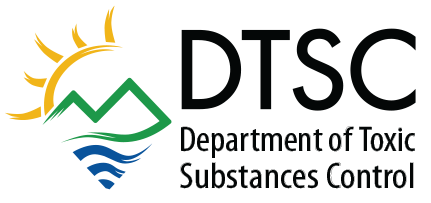DTSC Fact Sheet on Recorded Land Use Restrictions (AB 871)
New Legislation
Assembly Bill (AB) 871 (Wayne) (Chapter 430, Stats. 1998) became effective on January 1, 1999. Pursuant to AB 871, Department of Toxic Substances Control (DTSC) is required to maintain a list of all land use restrictions recorded pursuant to Health and Safety Code sections 25200, 25200.10, 25202.5, 25222.1, 25229, 25230, 25355.5, and 25398.7. (All references herein are to the Health and Safety Code unless otherwise stated.) At a minimum, this list must provide the street address, or if a street address is not available, an equivalent description of location for a rural location or the latitude and longitude of each property. DTSC is also required to update the list as new land use restrictions are recorded, and make the list available to the public, upon request, and place the list on the DTSC Internet website.
The list of recorded land use restrictions will also be incorporated into the list of sites compiled pursuant to Government Code section 65962.5, known as the “Cortese List.” The Cortese List should contain all hazardous waste facilities subject to corrective action, (section 25187.5), all hazardous waste property or border zone property designations (section 25220), all information received on hazardous waste disposals on public land (section 25242), all hazardous substance release sites listed pursuant to section 25356, and all sites that were included in the former Abandoned Site Assessment Program (this program no longer exists).
Purpose of Recorded Land Use Restrictions
Recorded land use restrictions are land use covenants which can specify requirements or limit the use of real property and affect the title to property. Land use restrictions are recorded at a county recorder’s office so that they will be found during a title search of county records. Land use restrictions entered into or required by DTSC “run with the land,” i.e., are binding on current and subsequent property owners, and remain in effect until they are formally removed or modified. The purpose of recorded land use restrictions is to protect the public health and safety on contaminated land or the surrounding property when there is residual contamination on a property. The contamination could be hazardous waste or substances that are left in place upon closure of a hazardous waste disposal facility, or left in place as part of either a short or long-term stabilization action, a corrective action, or a planned remedial action.
Land Use Restrictions are Typically Used to do the Following
- Prevent inappropriate land use on property containing residual contamination or the surrounding property;
- Guarantee that information about property containing residual contamination is available to local governments and the public;
- Disclose to real estate transactions participants (buyers, sellers, lending institutions, brokers, title companies) that the property in question contains residual contamination;
- Ensure that long-term mitigation measures or monitoring requirements are carried out and maintained;
- Ensure that the integrity and stability of the remedy is maintained;
- Ensure that subsequent property owners or lessees have a duty to assume responsibility for any requirements or restrictions pertaining to residual contamination when they take over the property;
- Ensure that DTSC will be contacted prior to change in land use or the cleanup remedy; and
- Ensure that only DTSC can terminate or modify the remedy.
The use of recorded land use restrictions is one of the methods that DTSC uses to protect the public from unsafe exposures to hazardous substances and wastes. DTSC’s use of recorded land use restrictions meets statutory requirements identified in Chapters 6.5, 6.8, and 6.85 of the California Health and Safety Code.
Availability
DTSC’s deed restriction list can be found on our web site or you can contact the office listed below.
Department of Toxic Substances Control
Site Mitigation Program/CalSites
Planning and Policy Unit
P.O. Box 806
Sacramento, CA 95812-0806
(916) 323-3400
Site Mitigation & Restoration Program Links
- Brownfields
- Cleanup in Vulnerable Communities Initiative (CVCI)
- EnviroStor
- Exide
- Human and Ecological Risk Office
- Lead-Acid Battery Recycling Facility Investigation and Cleanup Program
- Loans & Grants
- Land Use Restriction Sites
- Santa Susana Field Laboratory
- School Sites
- Sea Level Rise
- State Superfund Program
- Strategic Plan and Program Enhancement Work Plan
- Vapor Intrusion
- Contact Information
Site Mitigation & Restoration Program Related Links
Connect / Contact Us
Office Locations / Map
Sign up for an E-List
Regulatory Assistance Officers
Statewide Campaigns/Alerts
Report an Environmental Concern
Amber Alert
California Grants Portal
Register to Vote
Save Our Water.com



 Katherine M. Butler, MPH
Katherine M. Butler, MPH